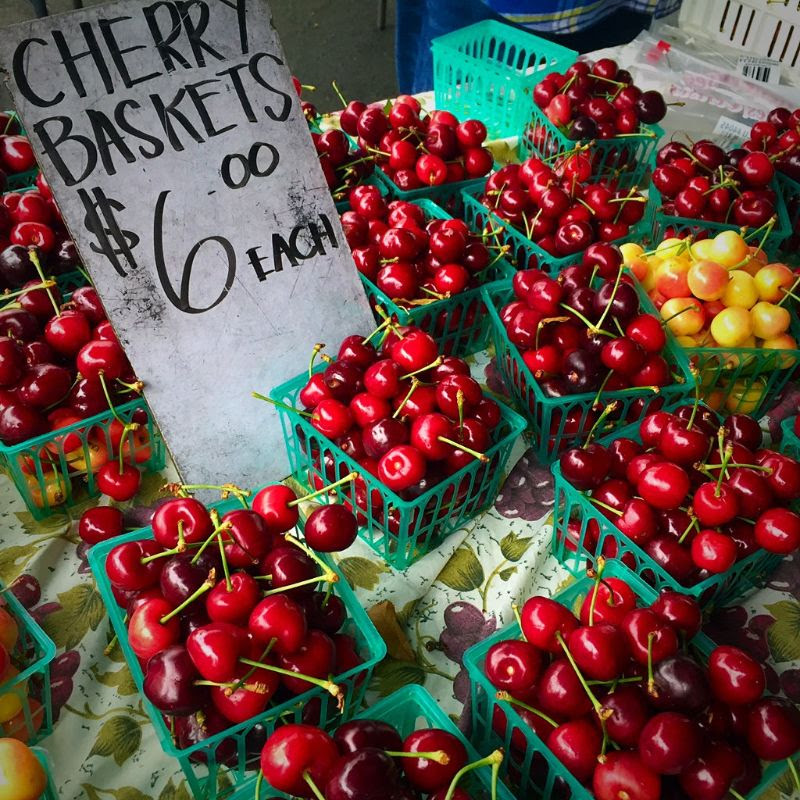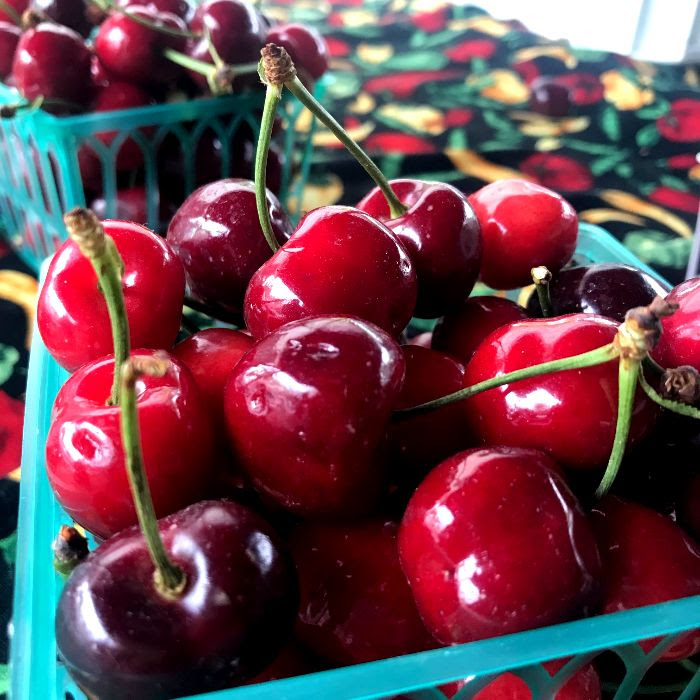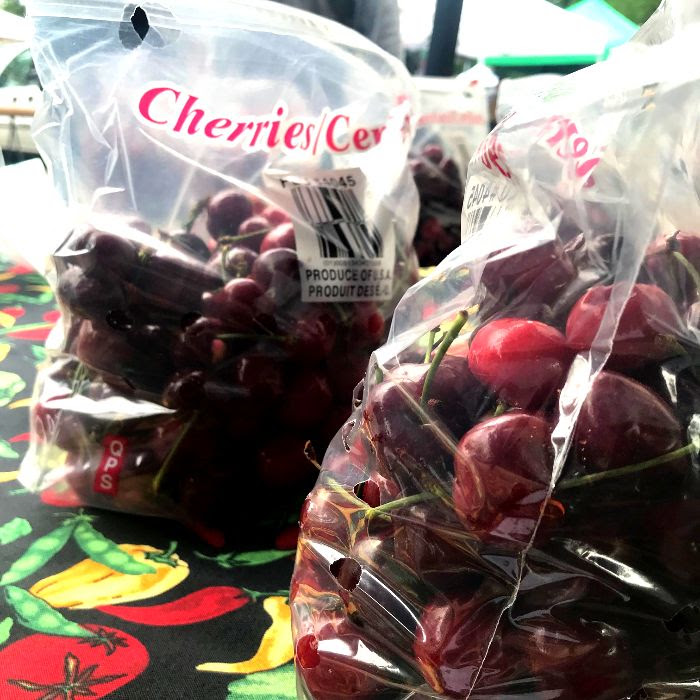Technically these little gems are classified as a stone fruit, in two varieties: sweet and sour. Both have some serious nutritional value, and are delicious in their own way. Sweet cherries are larger and sweeter, with firm heart shaped flesh, and are great eaten raw. Tart cherries are not tasty raw – use this variety for pies, preserves, and relishes instead. Tart cherries aren’t easy to find, so look for the sweet variety at the market! The cherry season isn’t long, but don’t worry! Freeze some for winter – they retain 100% of their nutritional value!
In the United States, cherries are grown in California, Washington, Oregon, Wisconsin and Michigan commercially.Cherry trees are a temperate latitude tree and require a certain amount of exposure to cold to germinate and to continue grow each year.Cherry trees have a very short growing season, with their flowers blooming approximately in March-April and the peak fruit harvest in May-June.Cherries are a good source of fiber and vitamin C. They also contain potassium, vitamin A and iron.
Eaten by the handful, cooked into pastries, and even paired with savory protein dishes, the cherry is as adaptable (and as tasty) as they come. Come pick up this iconic American fruit this Saturday at the Chico Certified Farmers’ Market for your Memorial Day plans!
Cherry-Picked Fast Facts!
- The most common varieties in our area of sweet cherries are the Bing and the Rainier.
- In the United States, cherries are grown in California, Washington, Oregon, Wisconsin and Michigan commercially.
- Cherry trees are a temperate latitude tree and require a certain amount of exposure to cold to germinate and to continue grow each year.
- Cherry trees have a very short growing season, with their flowers blooming approximately in March-April and the peak fruit harvest in May-June.
- Cherries are a good source of fiber and vitamin C. They also contain potassium, vitamin A and iron.
Make the Most of Your Cherries!
Choosing
Sweet cherries hit the market as early as May and wind down by August. Look for firm, blemish-free drupes that feel heavy for their size.
Storing
The fruits fade quickly at home, usually within about four days, so keep them cold and dry to help them last longer: Refrigerate them in an open container, and rinse just before eating.
Pitting
Pluck the stem and place the fruit on the opening of a thin-necked container (an empty wine bottle works well). Then push a straw or chopstick through. The pit pops right out!



